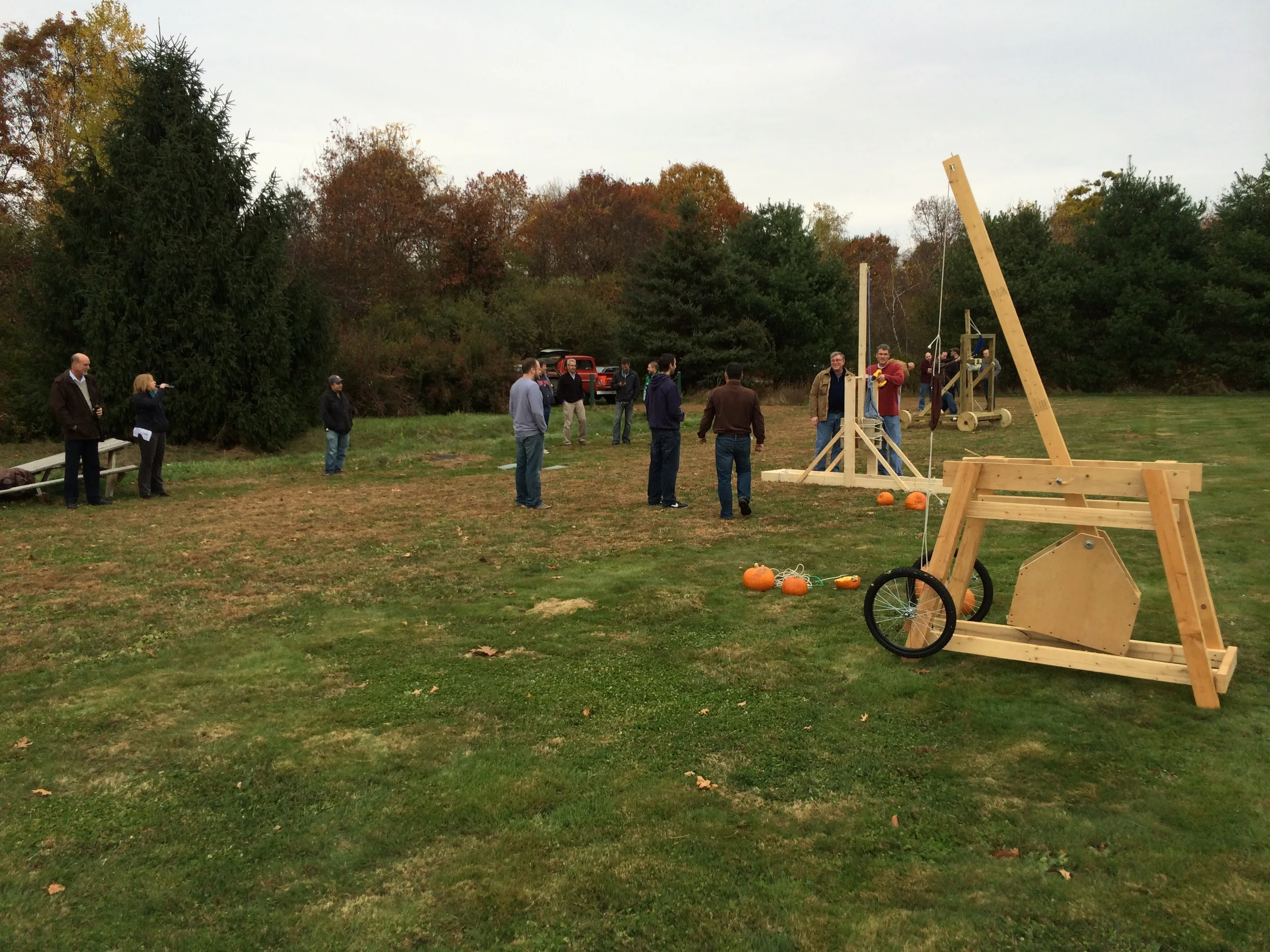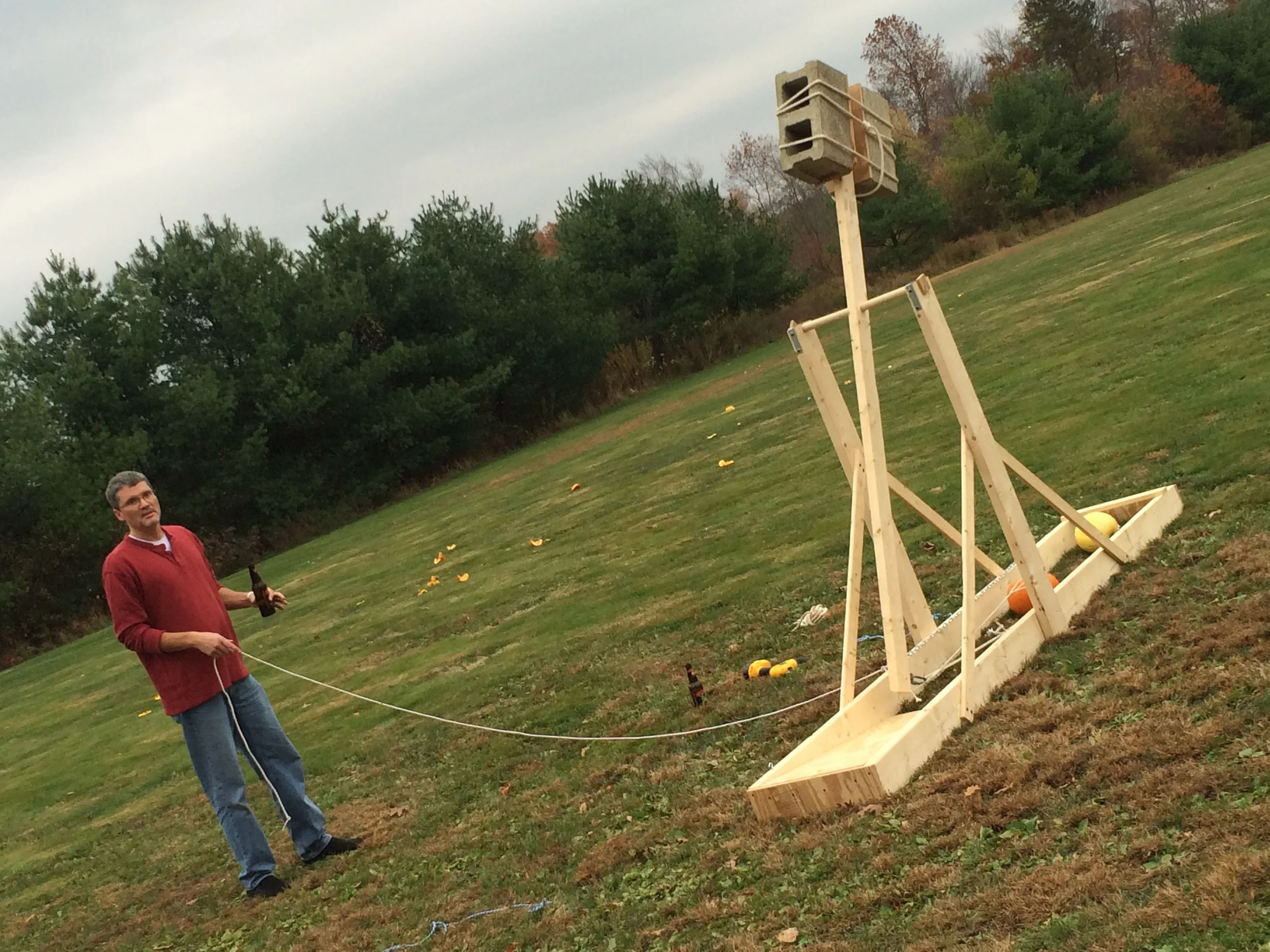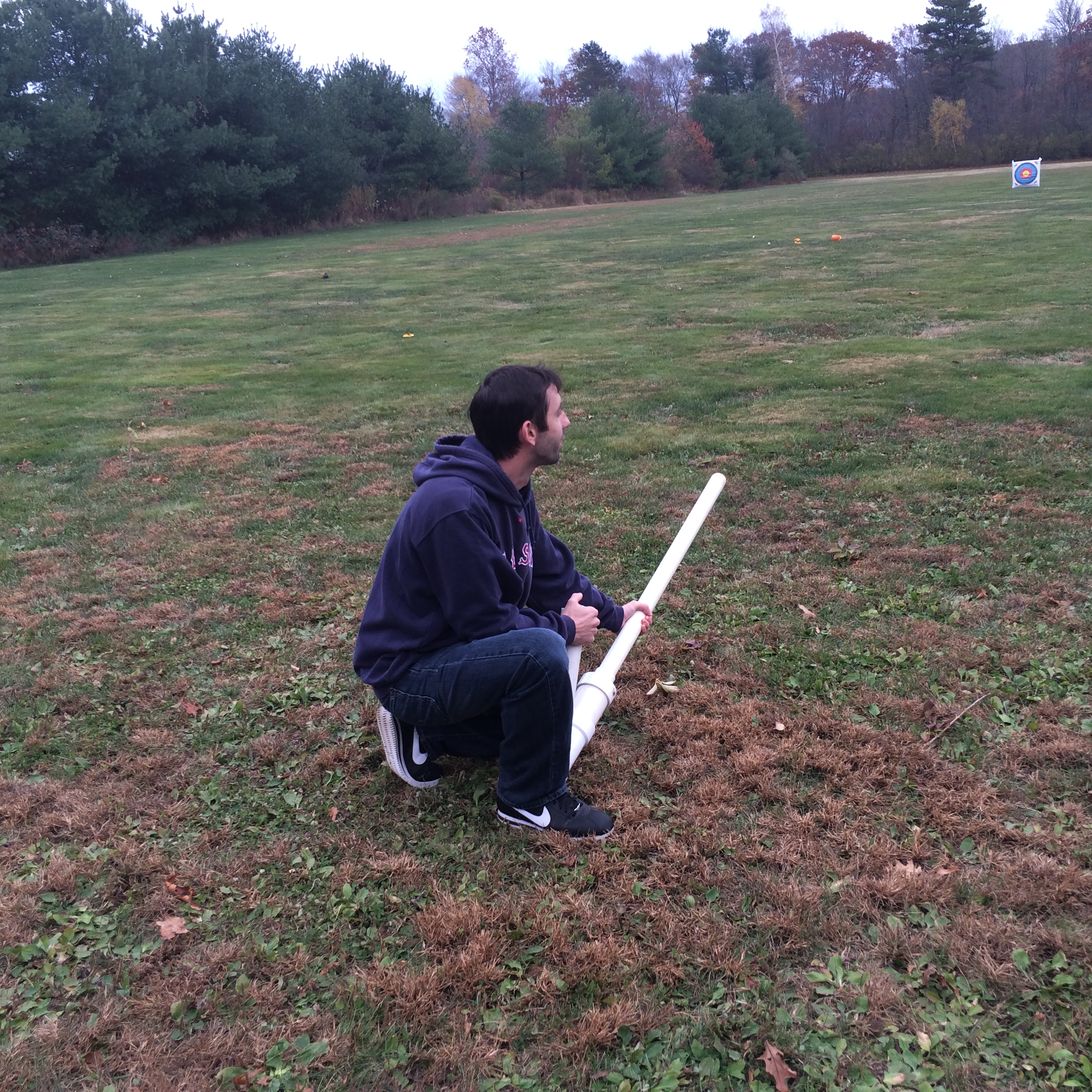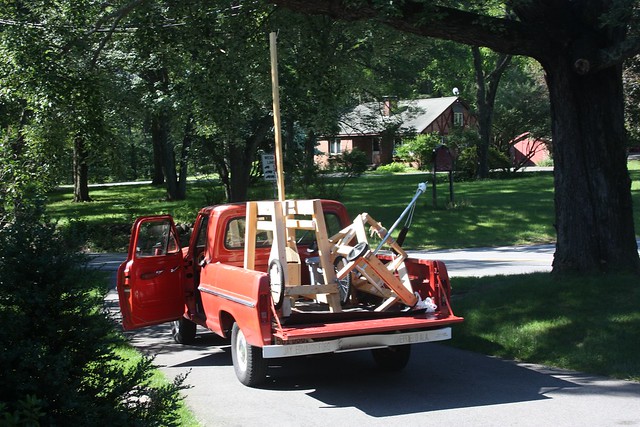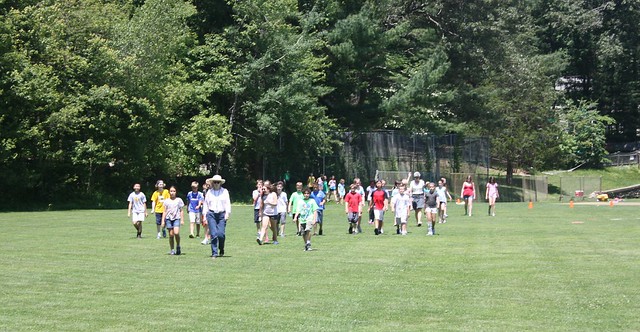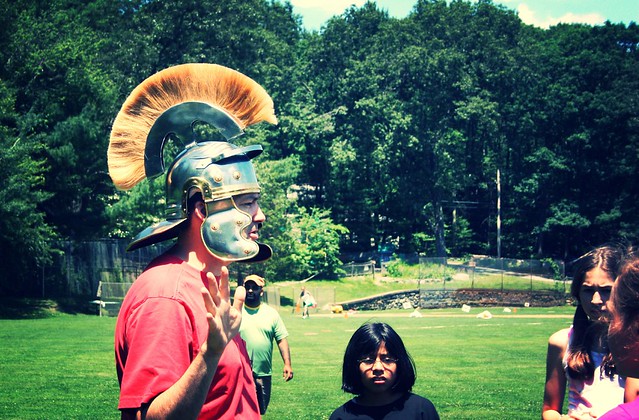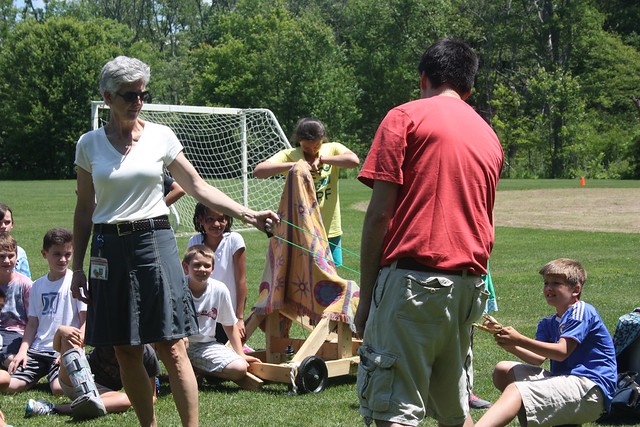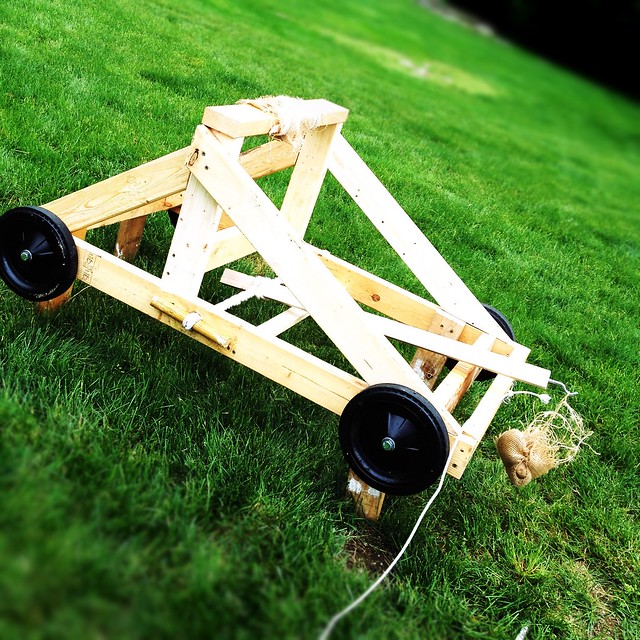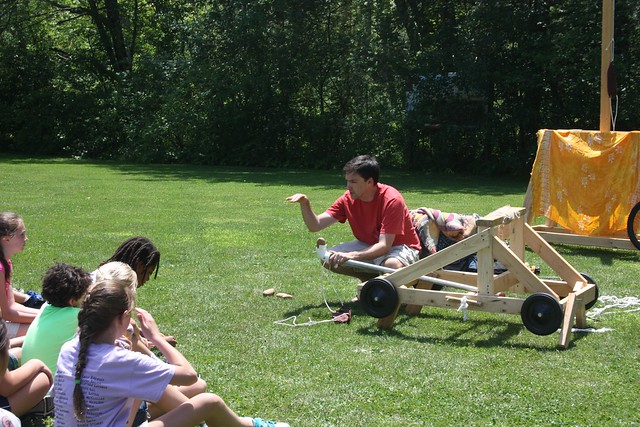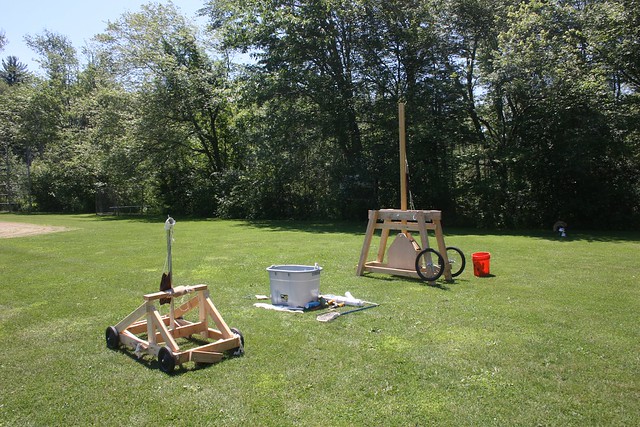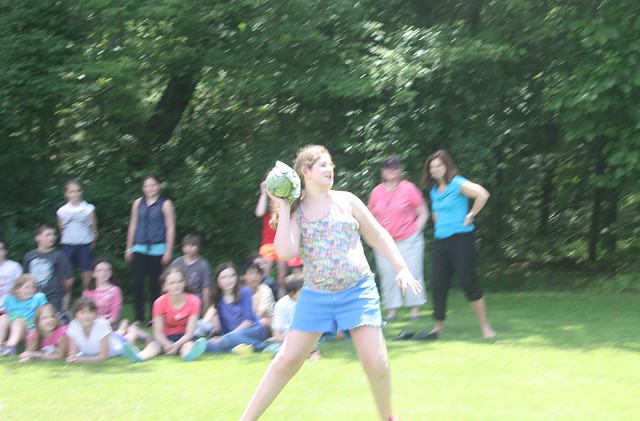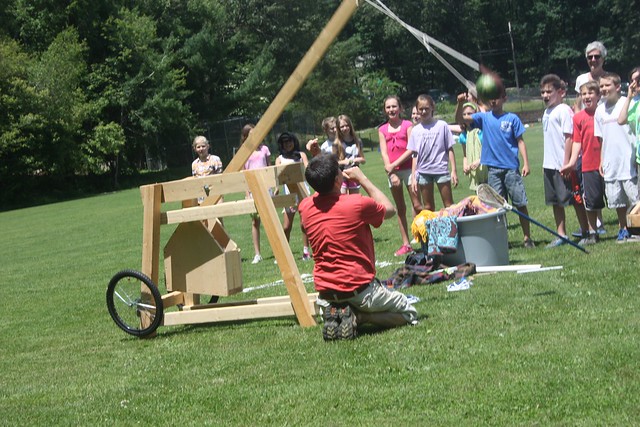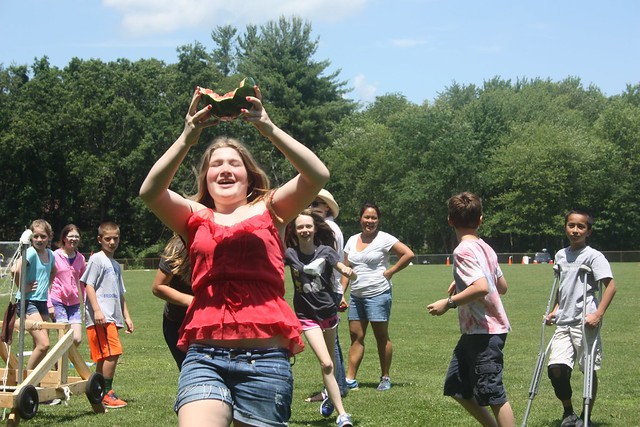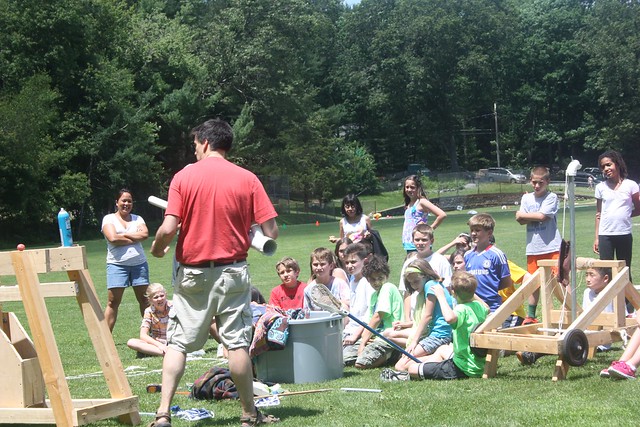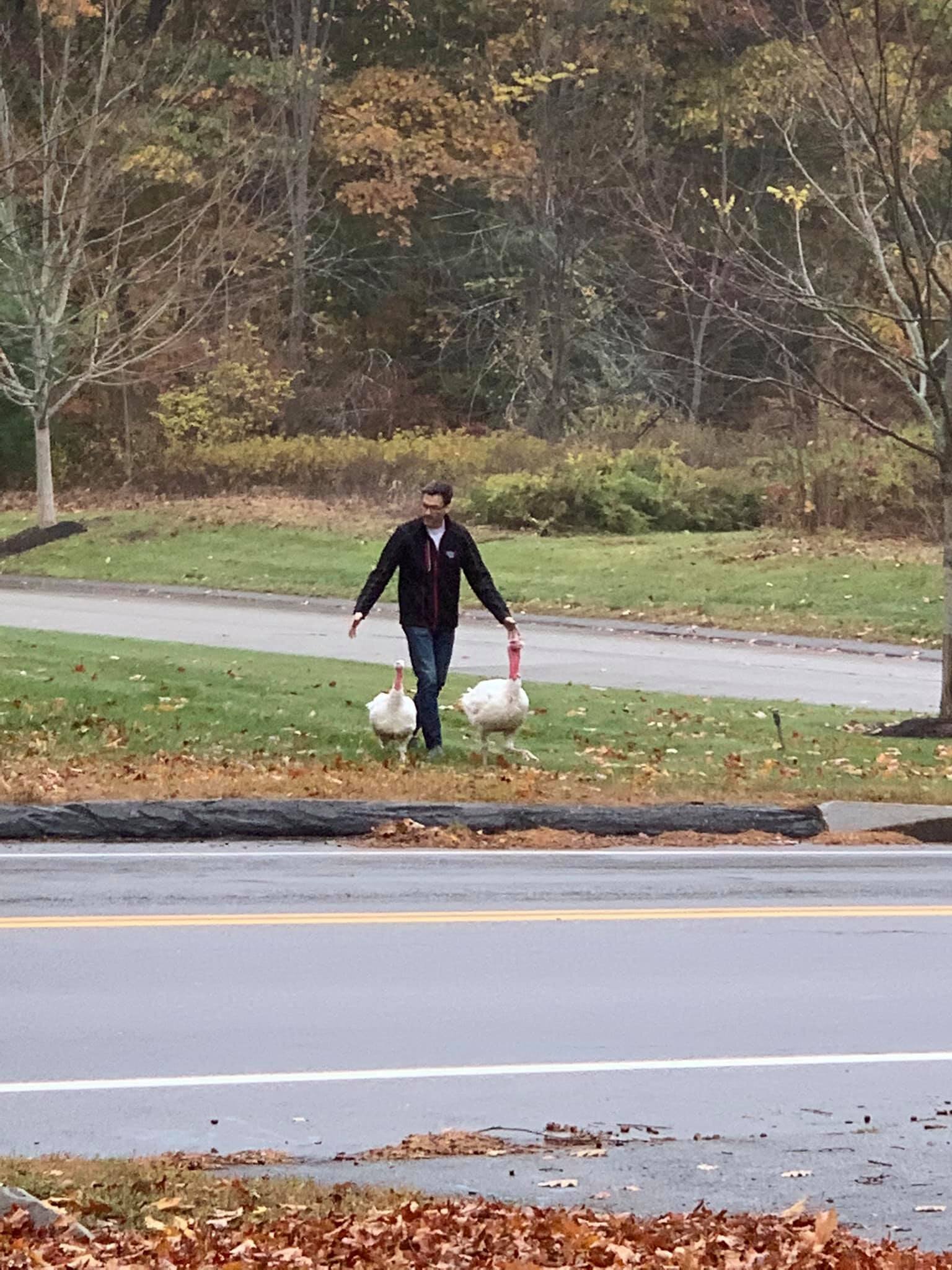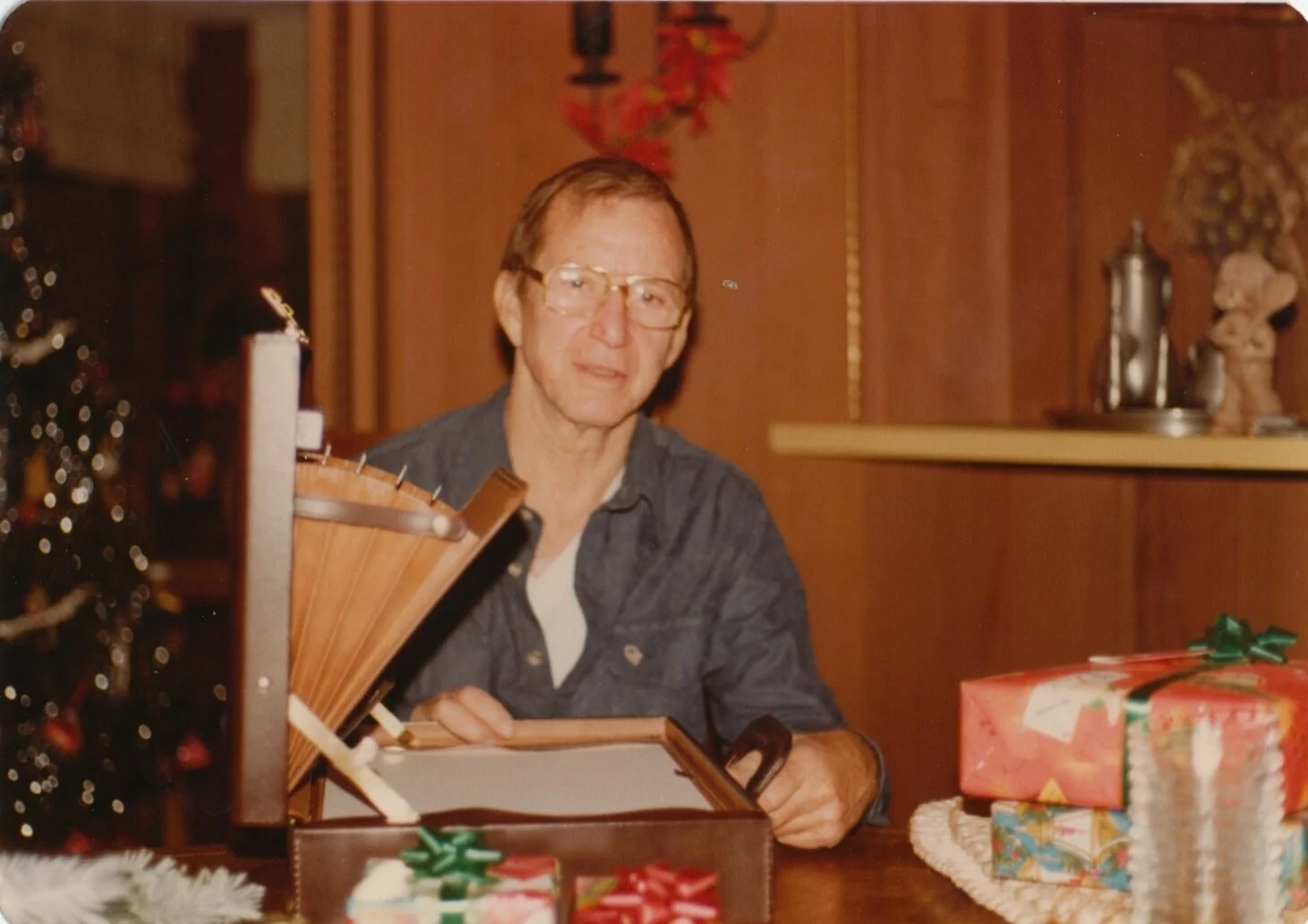Pumpkin Chunkin' - the @Work addition.
/Every year, we hold a company Halloween party. Mostly for the kids for the employees, who get to come to the offices in costume, walk through a not-very-scary raw-materials-warehouse-turned-haunted-house, and we all gather in the cafeteria to eat and take an hour or two away from our desks or lab benches to enjoy one another's company and families.
From time immemorial (and certainly before my time with the team), IT has sponsored a pumpkin carving contest. It always gets 4 or 5 fun entries, and adds to the Halloween spirit.
I'm not sure how, but at some point a few months ago, we were having a sort of idle conversation around the team space and I threw out the idea, "You know what would be fun, and in the spirit of Make? Let's take the leftover pumpkins and hurl them across the field. It could be a contest."
The team leapt on the idea. NEB Pumpkin Chunking was in the works.
I work with a bunch of Makers. It's one of my absolute favorite parts of what I do and where I work. Scientists and engineers are by nature tinkerers. And modern IT embodies this spirit. It's who we are.
And I'm a big believer in encouraging the Make. It's a huge part of how innovation happens. Plus, it was an excuse to throw pumpkins at work. What more could you ask for?
I thought about finding some way to make this an 'official' event. But we were all busy, and when we talked about having departmental teams, it just wasn't coming together. So a few weeks ago, I sent out an email to the team and a few select others that said:
"Dear all. I have a trebuchet in my barn. I am bringing it to work on Halloween to throw pumpkins across the field. You are invited to bring your own, and see if you can beat mine. Or not. It's totally up to you.
P.S. Someone should bring beer."
My trebuchet was leftover from teaching my daughter's 5th grade class a lesson in basic applied physics.
It works. But to be honest, not very well - it throws upwards very well. But forward release had always been a bit of a problem. I had plans to tweak and refine it, but I never got around to it. But I figured, what the hell. That kind of wasn't the point.
We had entries like the above onager. Which was a scaled up version of something like I built for the 5th graders. It had wooden wheels and a winch to cock the arm. And bolts to assemble it all on site.
Then there was the other end of the engineering extreme.
A stick with some cinderblocks tied on to one end with some rope.
"Do you remember that episode of 'Northern Exposure' where the DJ wanted to throw a cow, but they ended up convincing him to throw a piano instead? I was thinking about that, and just figured I could sort of scale it back."
That's the builder there with a beer in his hand. The one who was inspired by a 25 year old sitcom to tie cinderblocks to a stick.
The beautiful thing was: it worked at least as well as the other one.
My trebuchet, on the other hand, threw pumpkins 40-50 feet vertically into the air. which mostly then fell down around my feet.
The final entry was a potato gun. To make it qualify, we shoved summer squash and decorative gourds down the pipe.
They didn't hold up as well as potatoes - they sort of disintegrated in mid-air. But boy, would those sticky bits really fly.
Let the spirit of Make live on.
Best team building event ever.
